User story: How the Innoptus Solar Team Harnesses Supercomputing to Become World Champions
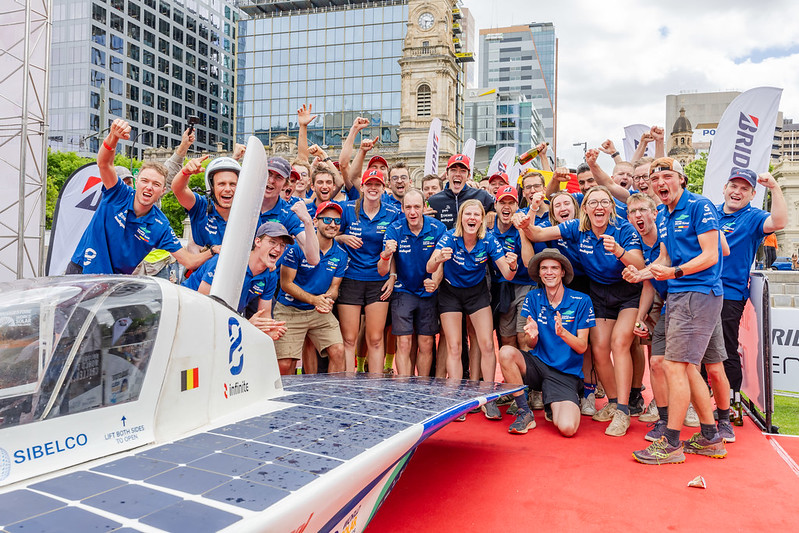
From Classroom to Championship
Two decades ago, fifteen KU Leuven students wanted to take their engineering degree to the next level. So, they decided to build the very first Belgian solar car to participate in the World Solar Challenge, the world championship of solar racing. The Solar team was born. Their goal? To reach world-class standards in the innovation of advanced technologies and renewable energy. With results: in 2019 and 2023, they were crowned world champions, showcasing the power of green energy and proving that Belgian technologies are at the forefront of innovation.
Every two years, a fresh team starts to build a new solar car from scratch. They do this with the help of thousands of simulations on the supercomputing infrastructure of the Vlaams Supercomputer Centrum (VSC), ultra-light carbon fibres, and the most advanced solar cells.
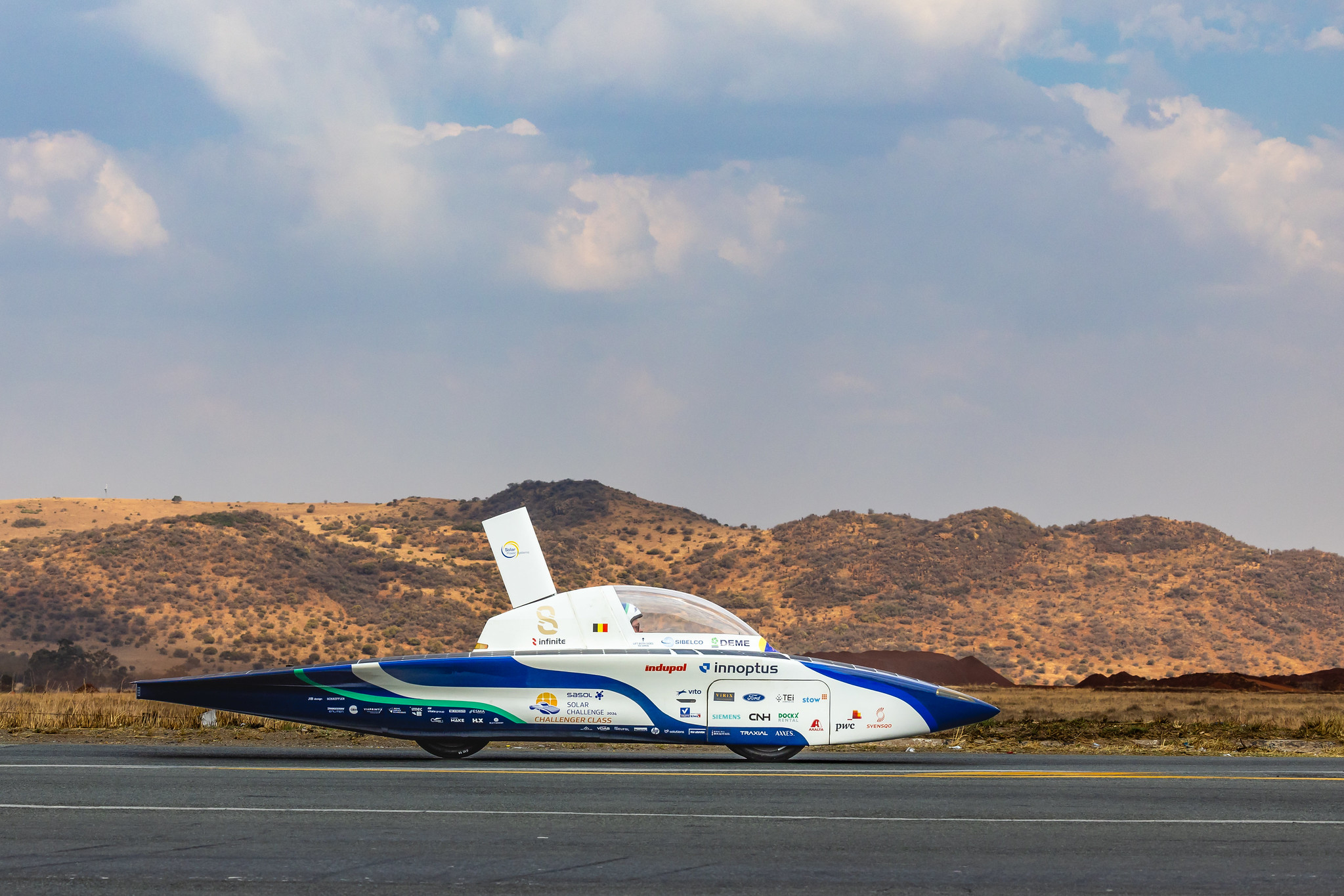
The Innoptus Solar Team is named after its main sponsor, 4ITEGO Group [1], which is the umbrella organization for Innoptus and Infinite (which is also the name of the solar car).
Aerodynamics as a Competitive Edge
Aerodynamics is essential to maximise a race car’s speed and performance because it directly affects its performance, stability, and efficiency. A team mastering aerodynamics often has a significant edge over competitors, as minor improvements can lead to measurable gains in performance. Therefore, the Innoptus Solar Team has three engineers dedicated to this field: Julie Ter Hark, Pieter De Mulder and Pieter Smet.
Pieter Smet explains: “Our goal is to push the aerodynamic performance of our car to the limit. We do this not only by minimising drag [2] but also through innovations like the car’s rotating fin, our most eye-catching feature. This fin stabilises the car in strong crosswinds, allowing us to maintain speed while others are forced to slow down.”
During the project's first months, the aerodynamics team optimises the car's exterior shape. Once this is finalised, the team turns their attention to aerodynamic innovations to gain an edge over competitors, as well as contribute to car production.
Racing against Time Facing Bigger Challenges
In August 2025, the new Innoptus Solar team will participate in the Bridgestone World Solar Challenge, a race of over 3000 kilometres across the Australian outback. Each edition has its own set of regulations. This year, the regulations changed significantly compared to previous years.
Pieter De Mulder: “One of the biggest changes is the increase of solar panel area from 4m² up to 6m². Due to the bigger panel, the size of the car increases as well, which opens up all kinds of possibilities for its outer shape. Our department investigates which car concept has the best aerodynamic performance while satisfying the regulations. These concepts get pushed to the limit to minimise the aerodynamic drag, leading to hundreds of cars that must be drawn and have to be simulated. Besides the changing regulations, the race occurs two months earlier than customary. This gives us thirteen months to create a winning solar car from scratch. Therefore, efficient time management is key to creating a car that can compete at the top of the league during the race.”
From Simulations to Success: Leveraging VSC for Aerodynamic Excellence
To determine the best aerodynamic concept for the car, the Innoptus Solar team leverages the supercomputing infrastructure of the VSC, which has proven to be a game changer.
Pieter Smet: “When optimising the car’s design, it comes down to implementing small adjustments to the design to minimise aerodynamic drag. While these adjustments can be quickly added to a drawing, we must wait for the simulation results before we can conclude if the adjustments are advantageous. Typically, simulations are the bottleneck in the aerodynamic optimisation process. However, thanks to our collaboration with the VSC, we can run many simulations in parallel without encountering any delays. We could simulate hundreds of car designs each week with the VSC infrastructure. In the past, teams without access to the VSC could only conduct up to 50 simulations in a week. In contrast, our team can now simulate over 50 cars in a single day while achieving accurate and representative results.”
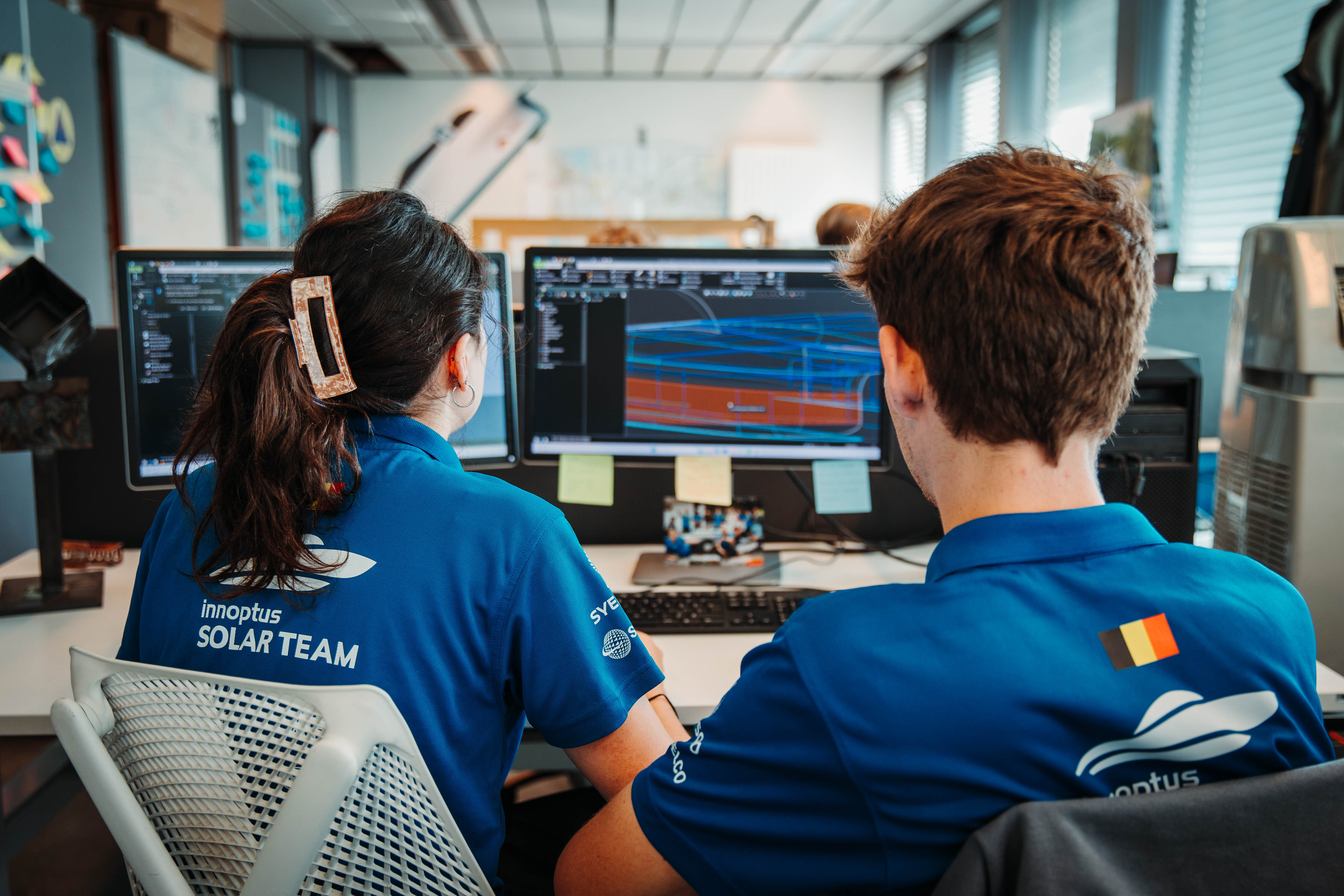
Running their simulations on the VSC offers the team several benefits. Julie Ter Hark explains: “First, outsourcing our simulations to the supercomputing infrastructure allows us to maintain full computing power on our own computers. This is essential for creating the drawings and meshes of our car. Second, we can perform multiple simulations in parallel. By distributing the total number of available nodes across our simulations, we can run up to ten simulations simultaneously. This built-in parallelism enables us to conduct sensitivity analyses of several car design parameters. Lastly, the VSC environment is very user-friendly. We only need to create two small scripts without programming experience to set up and run a simulation. Once these scripts are created, the only change needed between simulations is the name of the iteration we want to simulate.”
VSC Support Team empowering innovation
Over the last few years, generations of the Innoptus Solar team have worked with the VSC infrastructure. Previous teams gained much experience that was transferred to the new teams. Even with this knowledge available, the help of the VSC support team is still indispensable. The VSC support team helps them with the optimal distribution of cores and nodes, improving the simulation environment and resolving technical issues.
Pieter Smet: “Each year, we also try to elevate our simulation setup to the next level to obtain the most representative results possible, for example by using more complex simulation models. These changes also increase the required computing power to finish a single simulation. Besides the technical assistance, the support team is always open to negotiating the resources needed to ensure the simulation workflow runs smoothly. The quote ‘The VSC will not be the bottleneck of your optimisation phase’ from the people in the support team shows why they are a big contributor to the pleasant collaboration we have had the past few years.”
Driving Change: Shaping the Future of Technology and STEM
The Solar Team pushes innovation to its limits, creating new technologies and ideas that can be used in the future by the industry. Innovations such as an electric motor with nearly 99% efficiency, shark-skin-like surfaces, and refined microstructures for solar panels have already found their way to industry.
Julie Ter Hark: “Besides innovation, we want to inspire youngsters to show what is possible with STEM education. Is there anything cooler for a student to say than, ‘I made my solar car from scratch, AND I became a world champion with it’?”
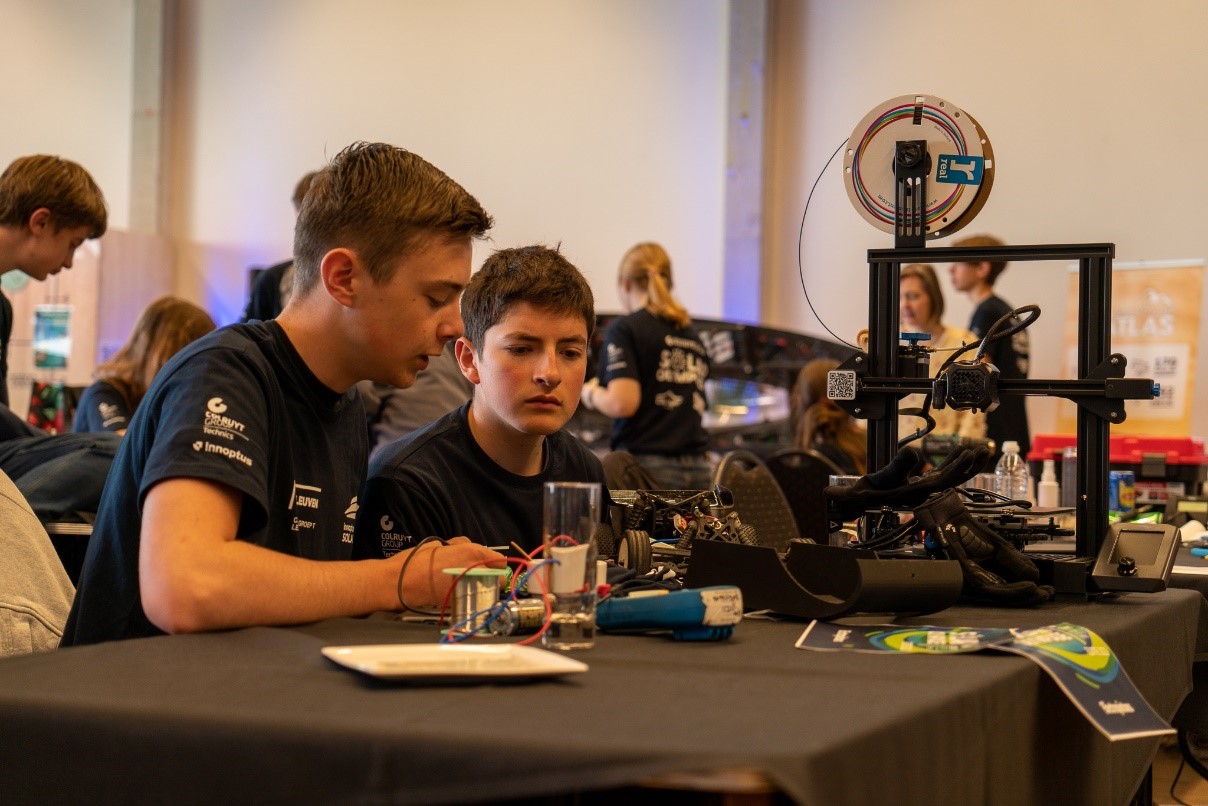
Accelerating Careers and Personal development
What makes this team special is the combination of its compact structure, a close-knit alumni community, and the support of over 160 partners. This mix enables them to push boundaries time and again. However, the project is not just about technology. For the students, the year with the Solar Team is a unique opportunity to surpass themselves. It accelerates both their careers and personal development to an unprecedented degree.
Pieter De Mulder: “At university, you get taught the theoretical principles that explain and solve real-life problems. Sometimes, you have a lab to test these principles with small experiments. In the Solar Team, you also use these principles in a bigger project with more at stake. Humans will drive the car you created worldwide, going from Australia to South Africa. You gain hands-on experience that can’t be taught through books. You also learn to work closely with a team under pressure and cope with problems that appear out of nowhere, some more severe than others.”
Within the Solar Team project, the students develop characteristics that recruiters look for in graduates entering the job market. Julie Ter Hark: “Being a world champion team requires a professional working environment, sometimes even more professional than some companies. Being part of such an environment teaches you how to operate professionally and efficiently within a team. The hunger for the world title also creates the ‘Getting things done’ mentality. This sometimes leads to long days with little sleep, showing that you must work hard to achieve your goals.”
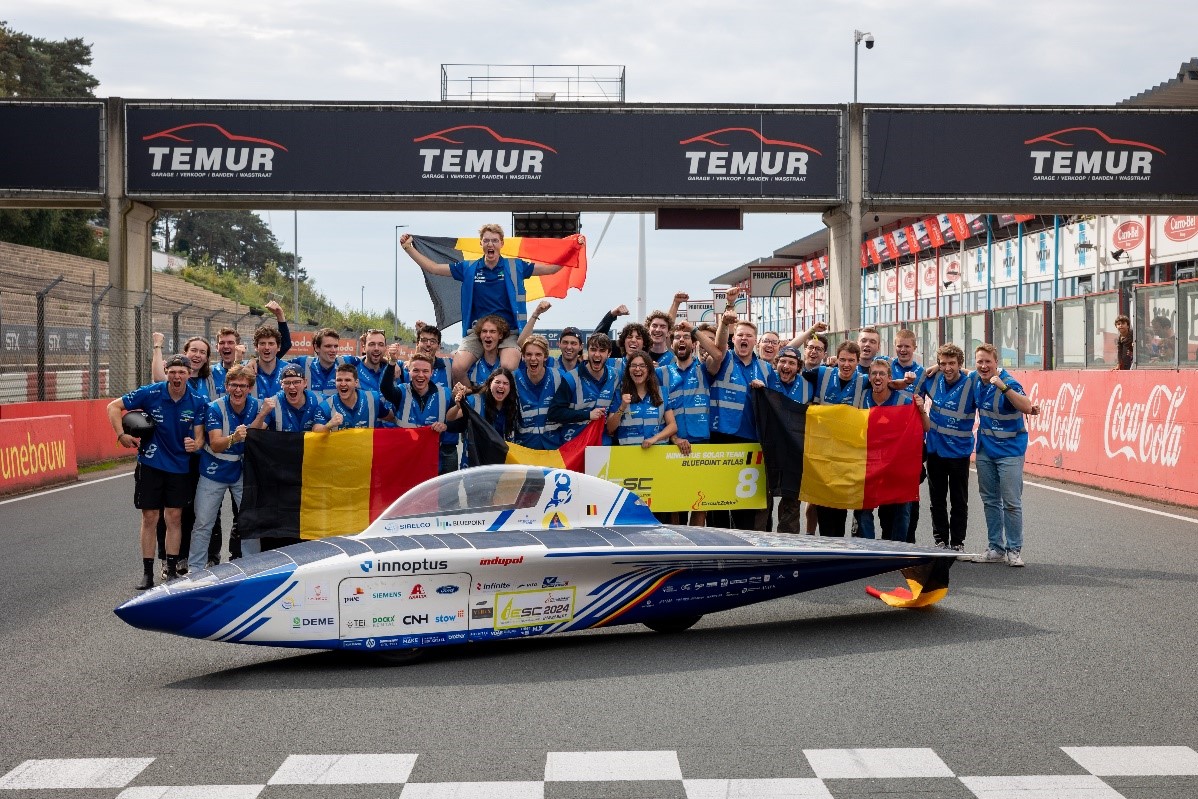
A Partnership for Victory: VSC and the Innoptus Solar Team
According to Pieter Smet, collaborating with VSC is an obvious choice for the Innoptus Solar Team: “The VSC offers a user-friendly environment that uses its own computing power to run the most complex simulations for you. The combination of this available computing power and the assistance of the support team can save you an immense amount of time on your project so you can focus on other important tasks. If you have to run a huge batch of simulations that require a lot of computing power, consider working with the VSC. It will certainly make your life much easier.”
Jan Ooghe, Management Team Vlaams Supercomputer Centrum: “VSC is committed to fostering innovation in Flanders. We are proud to support inspiring projects such as the Innoptus Solar Team. We hope our computing resources will help them achieve victory in Australia!”
With an eye for detail and a drive to continuously improve, this team shows what Flanders excels at: developing innovative solutions that make an international impact.
[1] 4ITEGO has been the main sponsor of the Solar Team since 2023
[2] The resistance a car encounters as it moves through the air
[3] Solar Olympiade: https://www.solarteam.be/en/solar-olympiade (page in Dutch)
Publication date: 28/01/2025
Pieter Smet
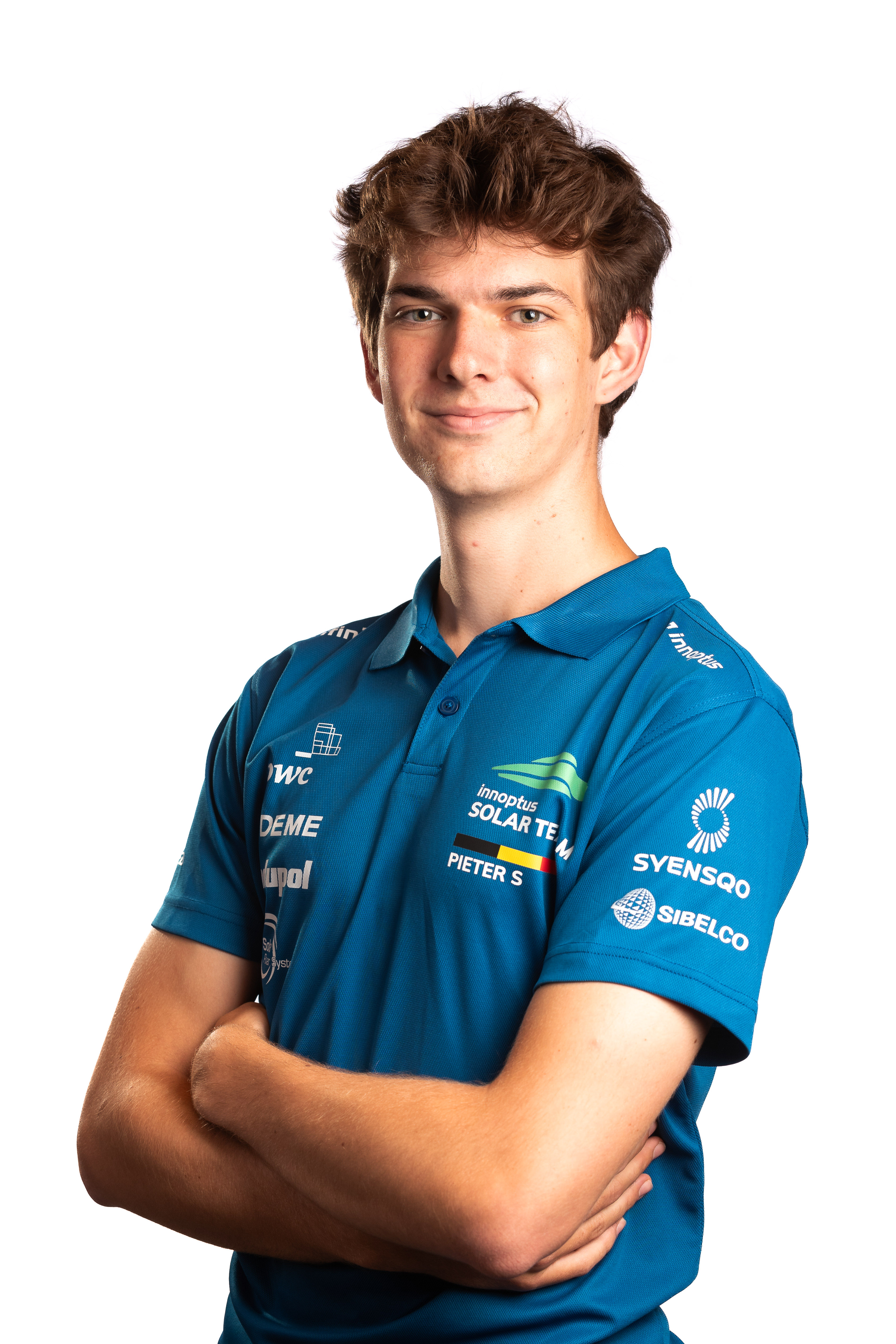 "Last year, I graduated as a mechanical engineer specialized in aerospace engineering. When I arrived in Leuven back in 2019, I got to know the Solar Team because of their first world title in the Bridgestone World Solar Challenge. Throughout my bachelor’s I developed a passion for fluid mechanics. In my master’s I delved deeper into this domain with my specialization as aerospace engineer. Creating a solar car from scratch using my knowledge I’ve gained throughout my studies was a once in a lifetime opportunity that would give me invaluable experience and memories for the rest of my life. Now I’m here, as an aerodynamics engineer, helping to create our eleventh solar car with one goal in mind: defending our world title at the world championship in Australia at the end of August 2025."
"Last year, I graduated as a mechanical engineer specialized in aerospace engineering. When I arrived in Leuven back in 2019, I got to know the Solar Team because of their first world title in the Bridgestone World Solar Challenge. Throughout my bachelor’s I developed a passion for fluid mechanics. In my master’s I delved deeper into this domain with my specialization as aerospace engineer. Creating a solar car from scratch using my knowledge I’ve gained throughout my studies was a once in a lifetime opportunity that would give me invaluable experience and memories for the rest of my life. Now I’m here, as an aerodynamics engineer, helping to create our eleventh solar car with one goal in mind: defending our world title at the world championship in Australia at the end of August 2025."
Pieter De Mulder
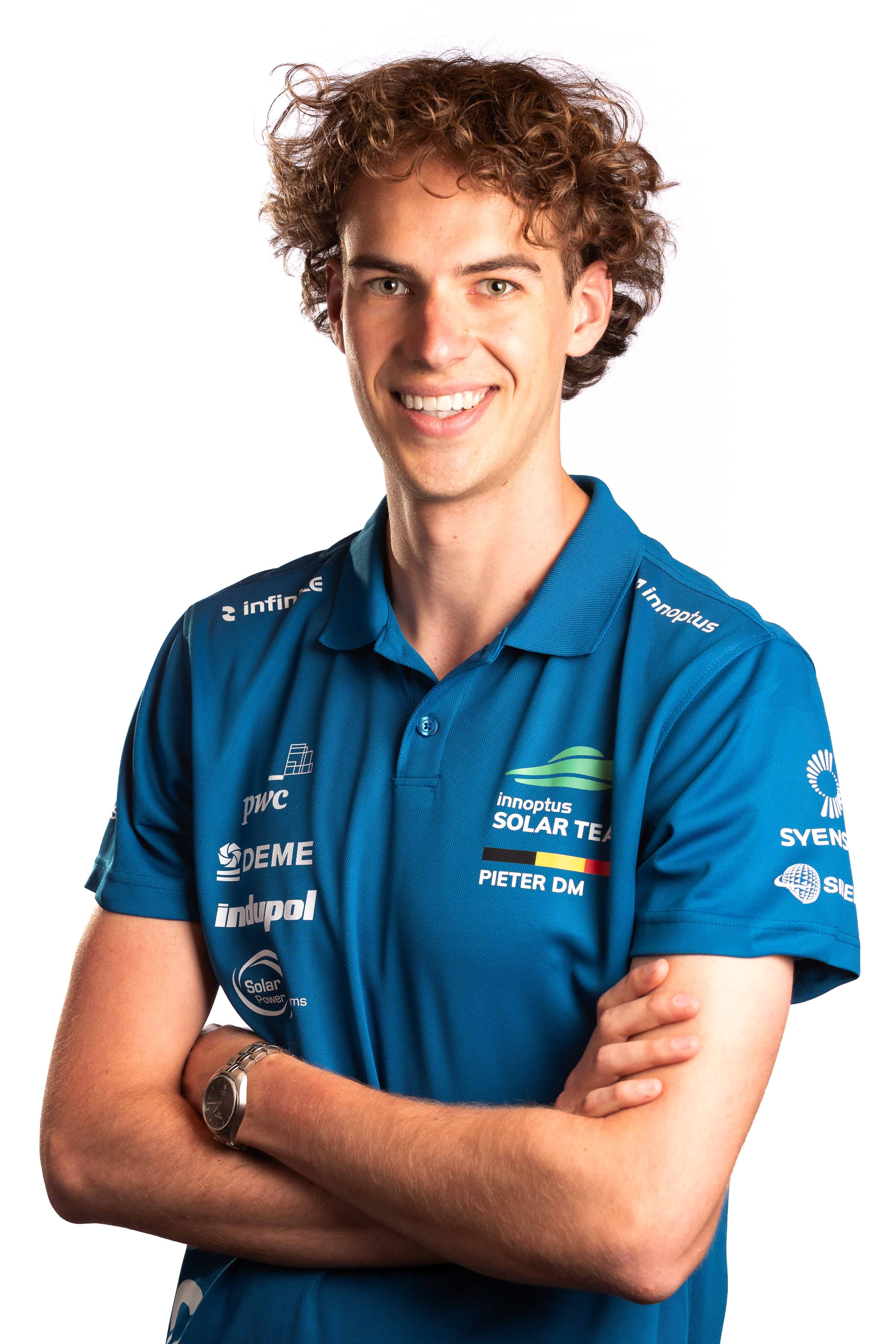
"As an electromechanical engineer who recently graduated in vehicle design, I was looking for my next challenge. Joining the Solar Team seemed like the perfect opportunity. Designing, building, and racing a solar car from scratch alongside 19 like-minded students was an adventure I couldn’t resist. Throughout my life, I’ve always been passionate about fluid dynamics. Being able to apply my knowledge and love for aerodynamics in this project is truly a dream come true. Building a car and competing in a world championship with 19 amazing teammates is an experience I will never forget."
Julie Ter Hark
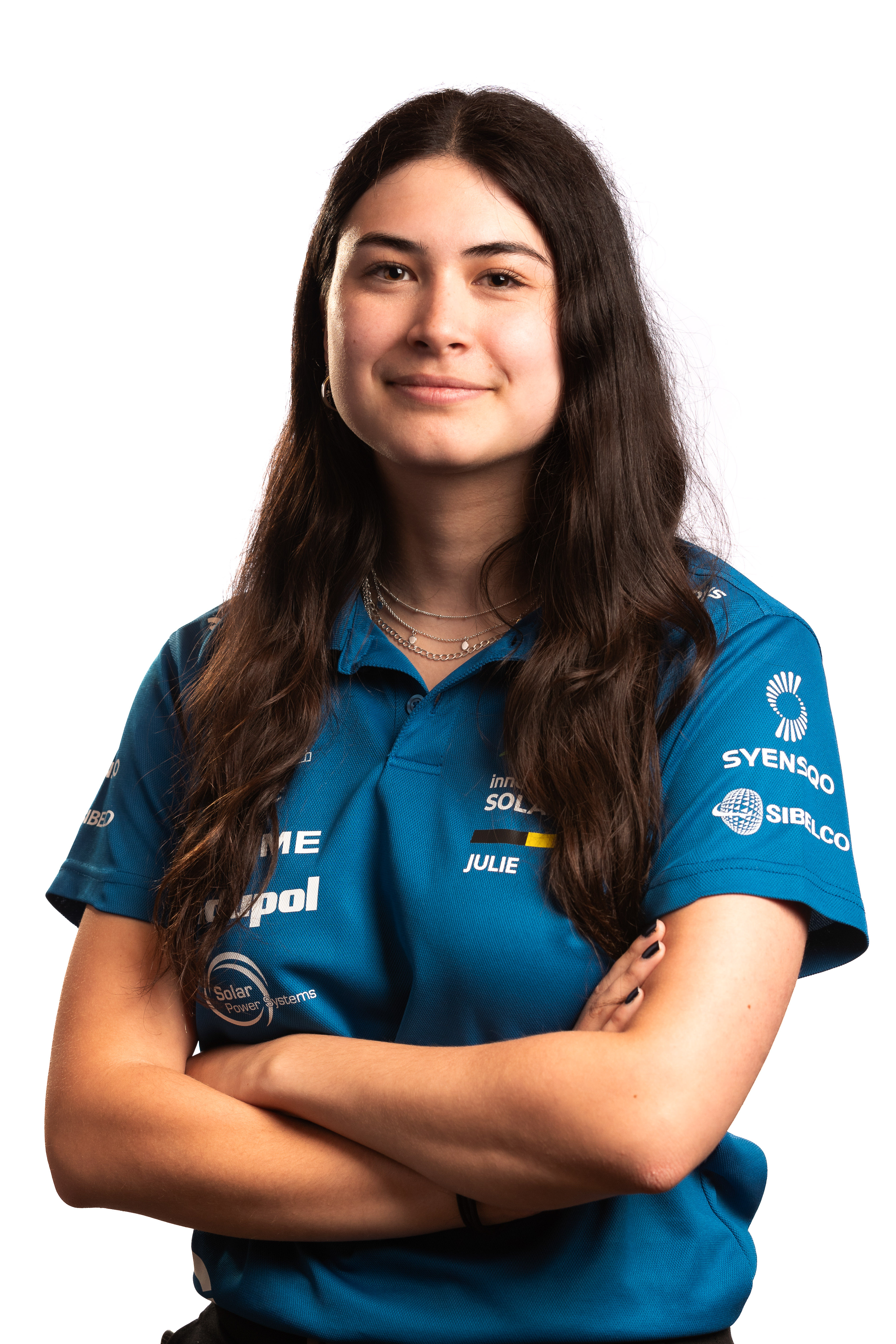
"I am a graduated Mechanical Engineering student with a focus on thermodynamics and aerodynamics. During my studies at KU Leuven, I discovered my fascination with fluid mechanics and the science behind optimizing performance. The Belgian Solar Team’s achievements inspired me early on, and being part of such an ambitious project has been a dream come true. As an aerodynamics engineer on the team, I’ve had the chance to combine my academic knowledge with practical experience, contributing to the design and optimization of our solar car. Our mission is clear: to innovate, push boundaries, and defend our World Champion title at the Bridgestone World Solar Challenge in Australia in 2025."